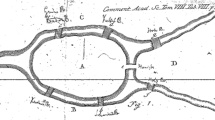Abstract
Realism, defined as a justified belief in the existence of the external world, is jeopardized by ‘meaning rationalism,’ the classic theory of meaning that sees the extension of words as a function of the intensions of individual speakers, with no way to ensure that these intensions actually correspond to anything in the external world. To defend realism, Ruth Millikan (1984, 1989a, b, 1993, 2004, 2005) offers a biological theory of meaning called ‘teleosemantics’ in which words, without requiring any contribution from the speaker’s intensions, are supposedly matched directly with their extensions by external norms. But even if one granted as a theoretical possibility that word meaning might possibly be stabilized through an external process, nonetheless, realists who wish to appeal to teleosemantics for a semantic proof of the external world must be capable of identifying these external norms, something that Millikan describes as highly fallible. Furthermore, because they can be aware of these norms only as these are internally represented, it would also be necessary for realists to verify that these internal representations accurately reflect the norms as they occur in the external world. But given that this is virtually the same stumbling block to realism found in meaning rationalism, it is concluded that teleosemantics is not likely to restore faith in this worldview.
Similar content being viewed by others
Notes
Putnam, as part of his earlier program to embarrass meaning rationalism, contested 1.5 using his Twin Earth experiment (1977, pp. 120–124). But we should keep in mind that because both the domain and the range of function 1.2 are restricted to concepts, there is no implied correspondence to the real extensions—which are sets of external variants (natural kinds, recurring properties, etc.). The idea is simply that the intension of a term logically determines the correct nominal extension. That is, there is no provision inside meaning rationalism that the nominal extension, as derived from the speaker’s intension, will necessarily match the real extension consisting of the objects to be covered by the nominal extension, ergo the correspondence problem.
References
Descartes, R. (1641/1960). Meditations on first philosophy. Indianapolis, IN: Bobbs-Merrill.
Dowty, D. (1979). A Guide to Montague’s PTQ. Indiana University Linguistics Club. Typescript, unpublished but circulated.
Dowty, D. (1981). Introduction to Montague semantics. Dordrecht: D. Reidel Publishing Company.
Dretske, F. (1986). Misrepresentation. In R. Bogdan (Ed.), Belief, form, content, and function (pp. 17–36). New York: Oxford University Press.
Ferguson, K. (2007). Biological function and normativity. Philo: The Journal of Philosophy, 10, 17–26.
Frege, G. (1892/1952). On sense and meaning. In: P. Geach & M. Black (Eds.), Translations from the philosophical writings of Gottlob Frege (pp. 56–78). Oxford: Basil Blackwell.
Millikan, R. (1984). Language, thought, and other biological categories: New foundations for realism. Cambridge, MA: The MIT Press.
Millikan, R. (1989a). Biosemantics. The Journal of Philosophy, 86, 281–297. doi:10.2307/2027123.
Millikan, R. (1989b). In defense of proper functions. Philosophy of Science, 56, 288–302. doi:10.1086/289488.
Millikan, R. (1993). White queen psychology and other essays for Alice. Cambridge, MA: The MIT Press.
Millikan, R. (2004). Varieties of meaning. Cambridge, MA: The MIT Press.
Millikan, R. (2005). Language: A biological model. Oxford: Oxford University Press.
Neander, K. (1991). Functions as selected effects: The conceptual analyst’s defense. Philosophy of Science, 58, 168–184. doi:10.1086/289610.
Putnam, H. (1977). Meaning and reference. In S. Schwartz (Ed.), Naming, necessity, and natural kinds (pp. 119–132). Ithaca, NY: Cornell University Press.
Putnam, H. (1983). Realism and reason: Philosophical papers (Vol. 3). Cambridge, UK: Cambridge University Press.
Putnam, H. (1987). The many faces of realism. LaSalle, IL: Open Court Publishing Company.
Acknowledgements
I am very grateful for extremely helpful comments from anonymous reviewers from Erkenntnis, as well as to Nicholas Georgalis, John Post, Thomas Bontly, Justin Fisher, John Collins, P. A. Woodward, Richard Miller, and others in audiences where portions of this manuscript were read.
Author information
Authors and Affiliations
Corresponding author
Rights and permissions
About this article
Cite this article
Ferguson, K.G. Meaning and the External World. Erkenn 70, 299–311 (2009). https://doi.org/10.1007/s10670-008-9132-z
Received:
Accepted:
Published:
Issue Date:
DOI: https://doi.org/10.1007/s10670-008-9132-z



